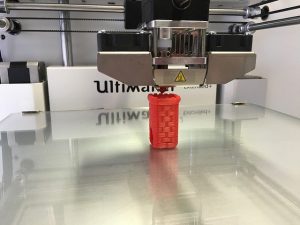
Fused filament fabrication (FFF) has become synonymous with 3D printing. There are FFF 3D printers that, like other 3D printers, build objects from raw material. Available in consumer- and commercial-grade models, they are the single most popular type of 3D printers. FFF 3D printers offer an effective building solution for nearly all types of objects, regardless of shape. Below are five things you need to know about FFF 3D printers.
#1) Builds Objects Layer By Layer
FFF 3D printers don’t build objects all at once. Rather, they build objects layer by layer. They work in conjunction with a substrate known as a print bed. FFF 3D printers will deposit material onto the print bed layer by layer. They’ll deposit all the material needed to complete the initial layer, after which they’ll deposit material onto the next-highest layer. FFF 3D printers will continue this cycle until the object has been fully constructed.
#2) Use Filament Material
Although there are different types of FFF 3D printers, they all use filament material to build objects. The filament material consists of plastic or thermoplastic that’s wound into a spool. This spool is located directly behind the FFF 3D printer’s nozzle. The FFF 3D printer will pull material from this feedstock as needed.
#3) Material Is Melted When Released
The filament material used by FFF 3D printers is initially cold and, therefore, solid. When it’s extruded out of the nozzle, though, it’s heated. FFF 3D printers essentially melt the material before releasing it onto the print bed. As the material melts, it’s extruded out of the FFF 3D printer’s nozzle. Therefore, the material turns from a solid state to a liquid state as it’s released onto the print bed.
#4) Nozzle Moves in X-Y Plane
The nozzle of FFF 3D printers is designed to move in an X-Y plane. In other words, it’s capable of moving both vertically and horizontally over the print bed. All FFF 3D printers move in this X-Y plane. Their movements, of course, are governed by the model file with which they are used. Model files contain specific instructions that tell FFF 3D printers where to move and where to deposit the material.
#5) Electric Coil Heaters
How do FFF 3D printers heat the material exactly? Most of them contain electric coil heaters. They feature one or more coils that’s connected to a power supply. As electricity flows through them, the coils heat up. The hot coils then melt the material as it’s released out of the FFF 3D printer’s nozzle.
